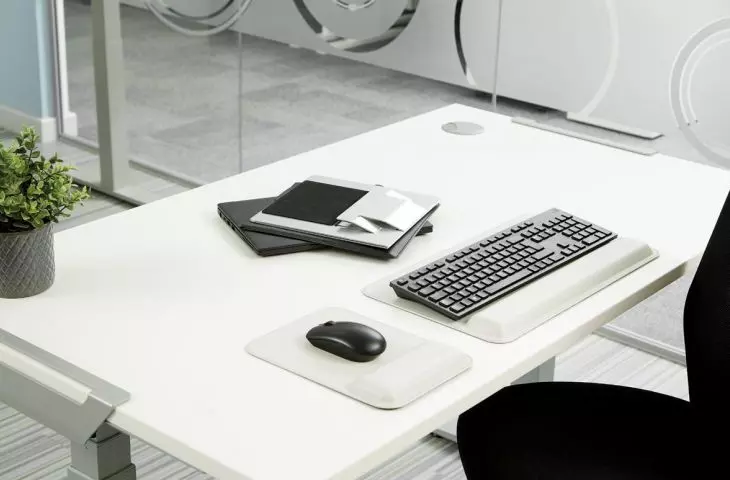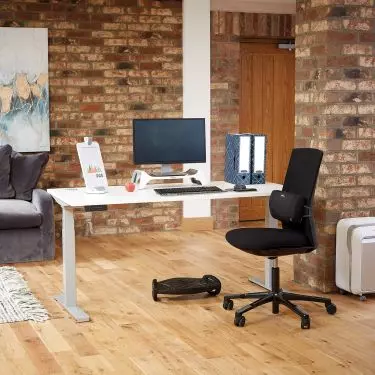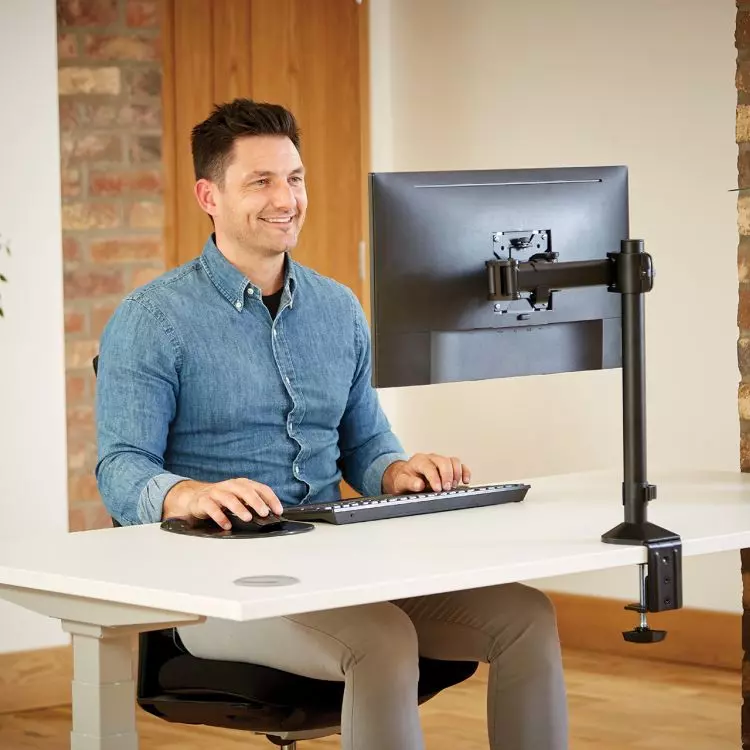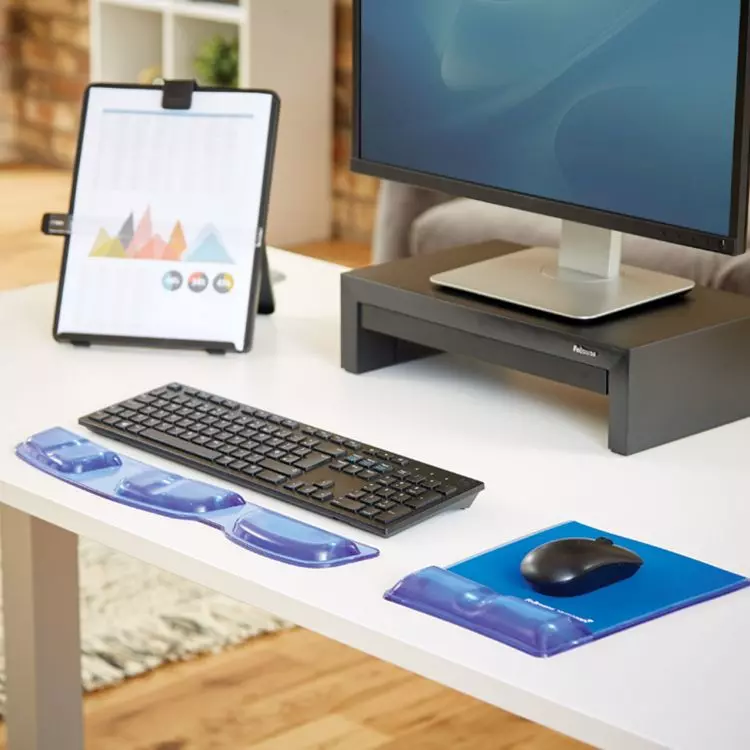The best ergonomic solutions for computer work - FELLOWES ERGONOMY.
Work from home
Our health and well-being is affected not only by whether our workstation meets ergonomic standards or how long we work sitting down. Everything we do outside the workstation itself is important - what and how we eat, whether we play sports, the air we breathe. Consider how your physical activity is at home - how much time you sit in front of the TV or computer. From regular exercise and an active lifestyle to checking the ingredients of our favorite foods , this is how the public is becoming more aware of healthy living. Working from home after years of working in an office in close proximity to colleagues can be a big change for everyone. Many people see working from home as more flexible and allowing them to concentrate. Working from home with breaks for the family can also be difficult to balance work and family life.
Home office - comfort and ergonomics
© Fellowes
FELLOWES ERGONOMIC SOLUTIONS
The Fellowes™ 4 Zone Method identifies the main ergonomic problems of the workstation and indicates the best ergonomic solutions for computer work. When preparing our workstation, we should start with the environment. To avoid feeling like you're at work all day, we should first carve out the right space. The desk should be positioned sideways to the window so that the light does not fall directly on the screen or blind the user. It's also worth taking care of fresh air access and air quality in the room.
Next, we should move on to the setup
Monitor/laptop screen heights and chair seat heights. Set your seat height so that your hands rest on the desk at a right angle or slightly open. Knees should be bent at a right or slightly open angle. The front of the seat should not compress the legs, and the feet should rest flat on the floor, If this is not possible, use a footrest. Adequate support for the lumbar spine will be provided by the use of a contoured back rest. Never work on a laptop by holding it directly on your lap or flat on a desk top. If you only use a notebook set it on a separate height-adjustable stand and connect an external keyboard and mouse. The top edge of the screen should be at an outstretched distance (about 40-70 cm) directly in your line of sight. Remember to adjust the screen's font size and its brightness and contrast accordingly.
Monitor arms provide more space on the desk
© Fellowes
Hand positions on the keyboard and when working with the mouse
When working, the hands should be bent at a right angle or slightly open (the angle between the shoulder and forearm), palms flat. To achieve this position, we should take care in advance to adjust the height of the chair seat relative to the tabletop. Ergonomic pads under the mouse and in front of the keyboard allow you to maintain a neutral position of the hands, without pressure in the wrist area. Remember to support the lower part of the hand, not the wrist, when using the pad.
Documents necessary for work
Documents should either be on the side of the dominant eye or directly in front of the user between the keyboard and the screen at an appropriate height reducing the amount of head movement. Use appropriate freestanding stands or built-in laptop/monitor stands.
Work products don't have to be boring - Crystal pads
© Fellowes
Bet on good organization of your workspace
Keep the tools you need for work within reach of your outstretched hand.
Formore information, visit the company's FELLOWES Polska S.A. page on thePdD portal.

































